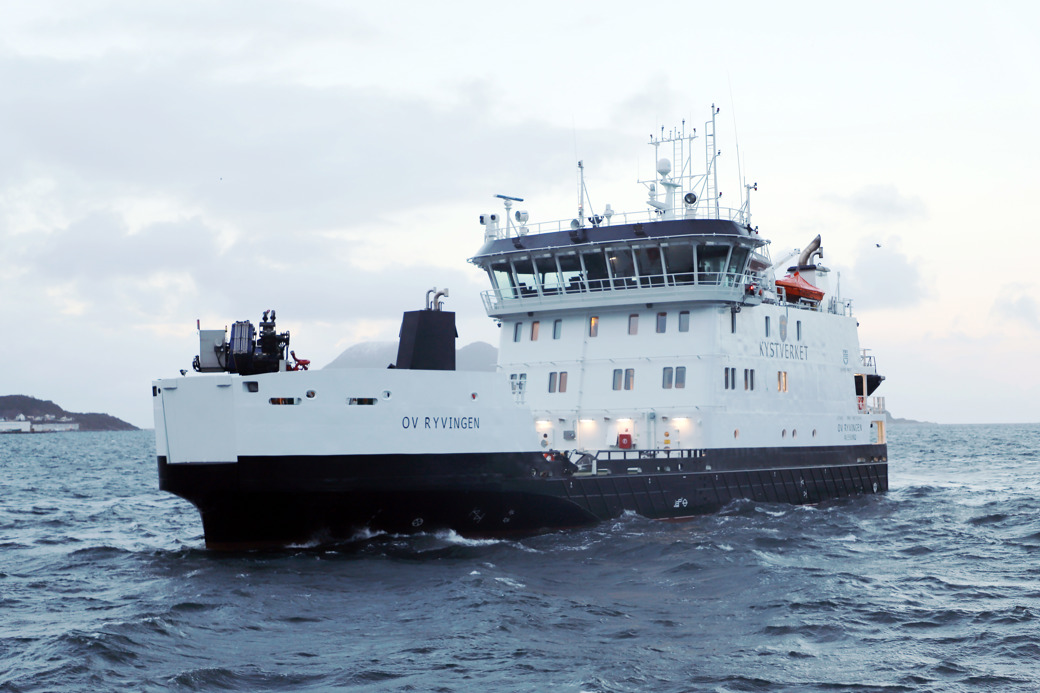
Integrated systems solution helps Norwegian Coastal Administration power ahead
NORWEGIAN COASTAL ADMINISTRATION
Reliability and efficiency
Kongsberg Maritime worked with NCA on power, propulsion, dynamic positioning (DP) and systems integration for the third and fourth ship in the five-vessel newbuild programme, Bøkfjord and Ryvingen, both built by Norway’s Fitjar Mekaniske Verft.
The battery pack installed on the Ryvingen has a 2,000kWh capacity, a substantial increase on the 850kWh capacity battery installed aboard its younger sister Bøkfjord. It also has twice the capacity of Norway’s first fully electric car and passenger ferry, Ampere.
While Bøkfjord sailed 10,000 nautical miles in its first year of services, in 2016, and showed a significant reduction in fuel consumption compared with the first pair of vessels, Kongsberg took technological developments a step further for the next vessel in the series, the slightly larger Ryvingen.
“The analysis gives us and NCA a much more precise picture of what is required of the power and propulsion system to enable the new vessel to perform its wide-ranging duties with the minimum of energy consumption and emissions. This led us to a radically different solution centred on the SAVeCube integrated DC switchboard with a single medium-speed diesel engine, two batteries and PM azimuth thrusters.” Bjørn-Erik Osmark, Kongsberg Maritime, Digital & Systems
Big data provides insight for optimisation
A broad breakdown of the operating profile for the NCA vessels showed that 28 per cent of the time was spent in DP mode, 20 per cent in transit and 52 per cent in harbour. To allow the parameters for the integrated hybrid system to be set correctly, a much more detailed analysis was made.
The larger battery capacity installed on Ryvingen allows the vessel to run on battery power alone for several hours, without using the diesel engine. Also, the batteries provide power when the vessel is docked and can be recharged using an onshore power supply.
In addition to the hybrid system’s two generators and the battery packs, Kongsberg also supplied Bergen engines, permanent-magnet azimuth propulsion propellers and thrusters, the automation system, Dynamic Positioning (DP), control systems, and the SAVe CUBE electrical system.
SAVeCube houses the DC bus, all drives and frequency converters in a single cabinet, allowing the two 1,500kWh batteries to be easily connected to the DC system and the engine to run at variable speeds to optimise its efficiency. Ryvingen’s 3MWh of energy storage is probably the largest installed to date in a vessel of this size range.
Increase the power
Based on positive experiences its first hybrid-powered vessel, the Norwegian Coastal Administration (NCA) decided to significantly increase battery power in the next vessel in its new building programme.